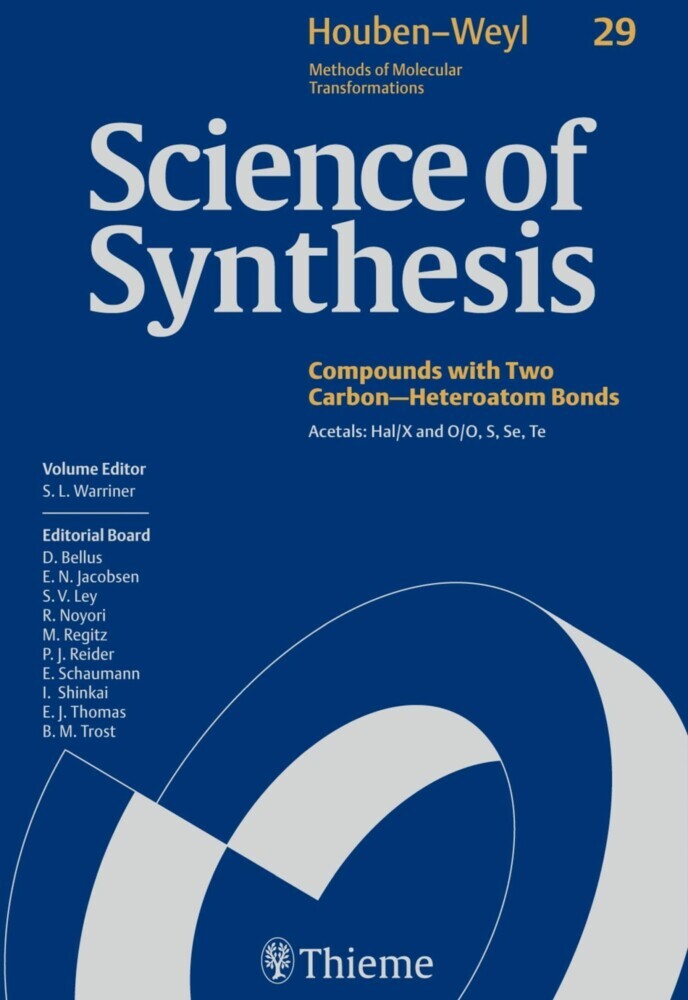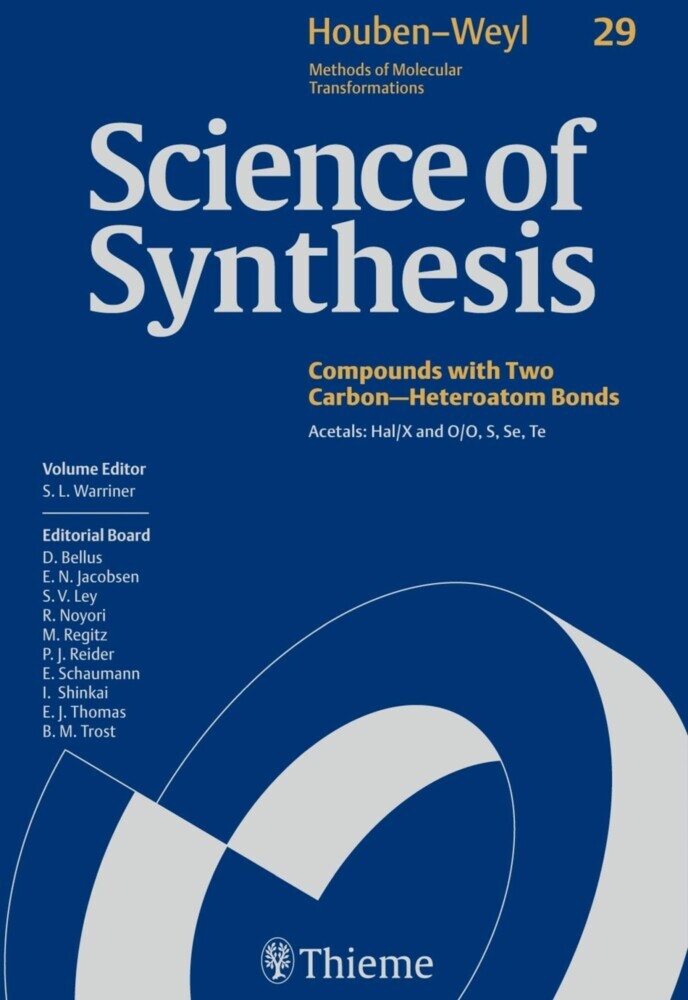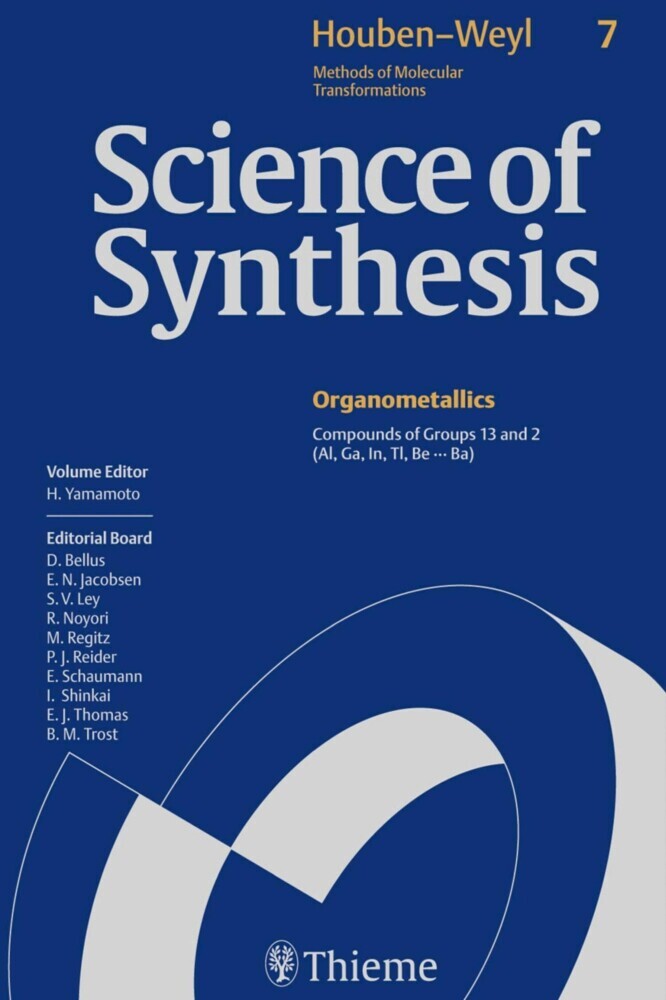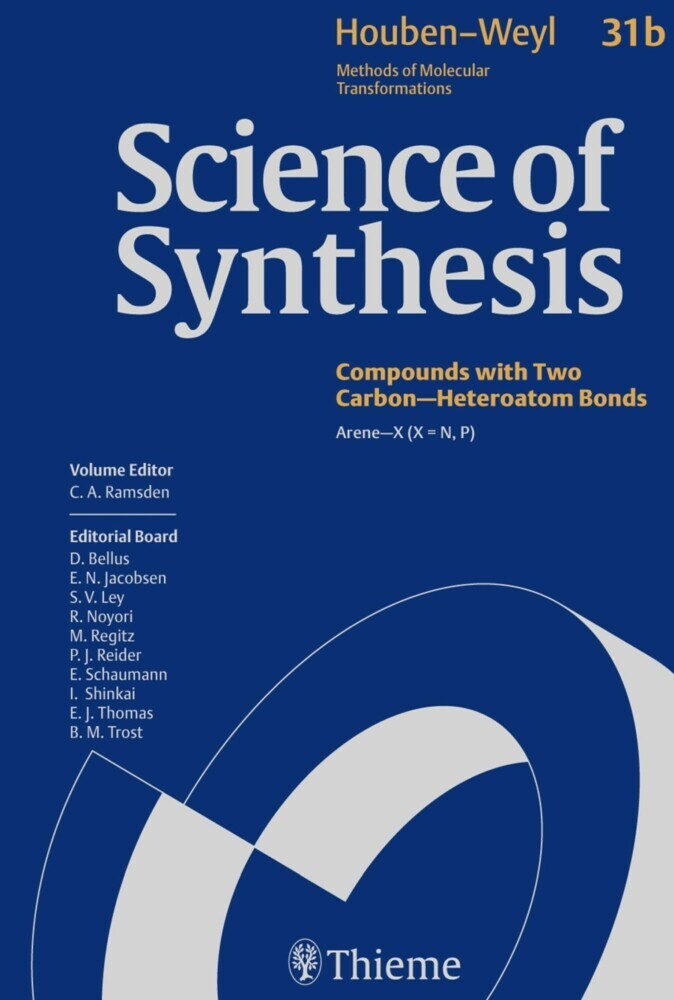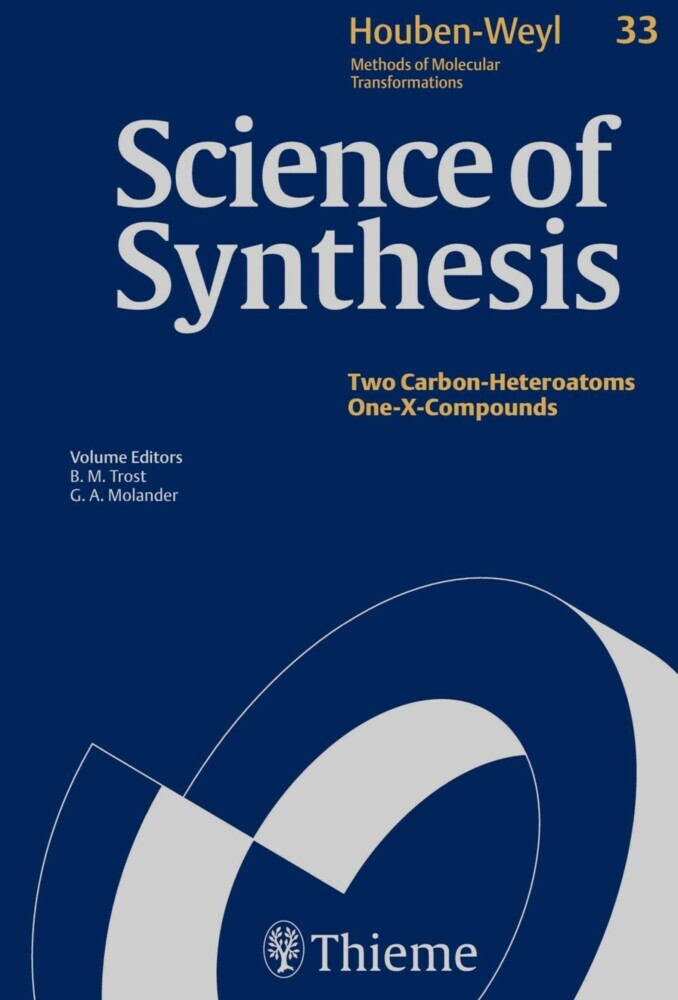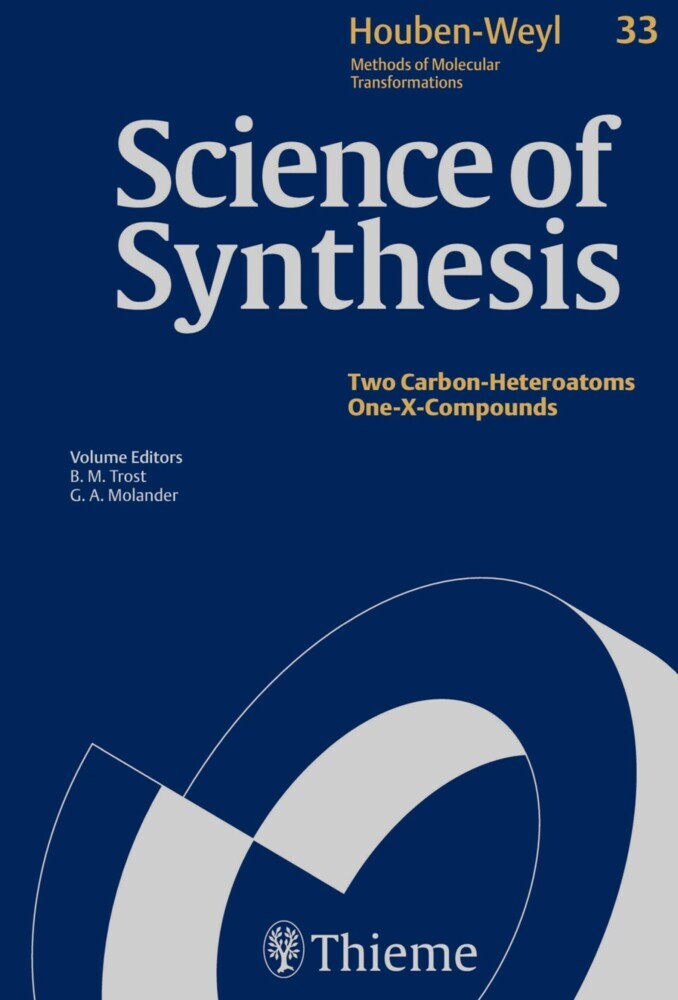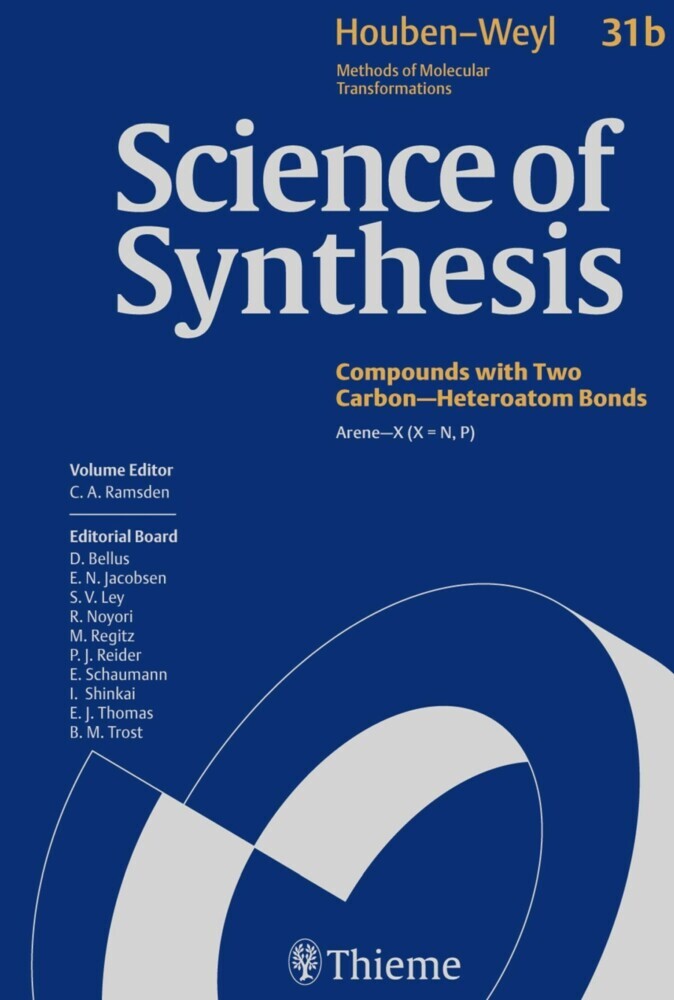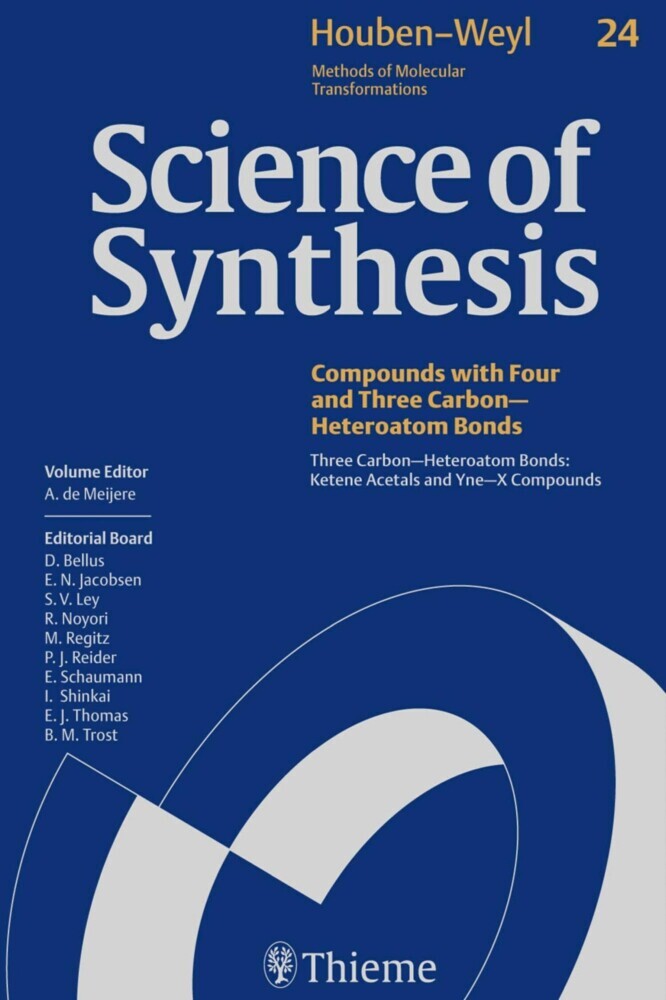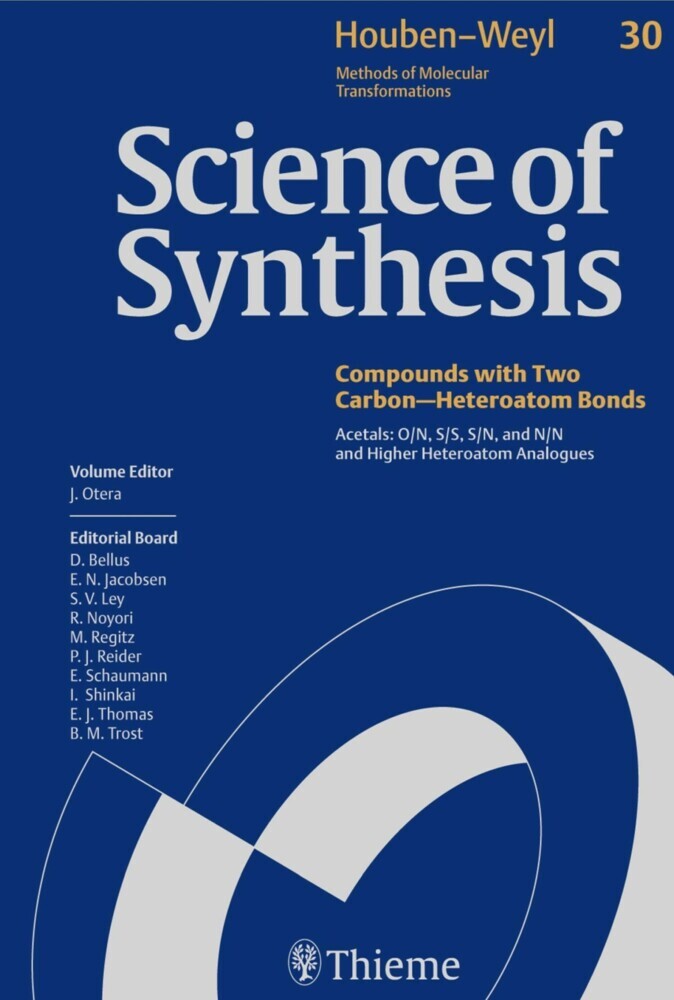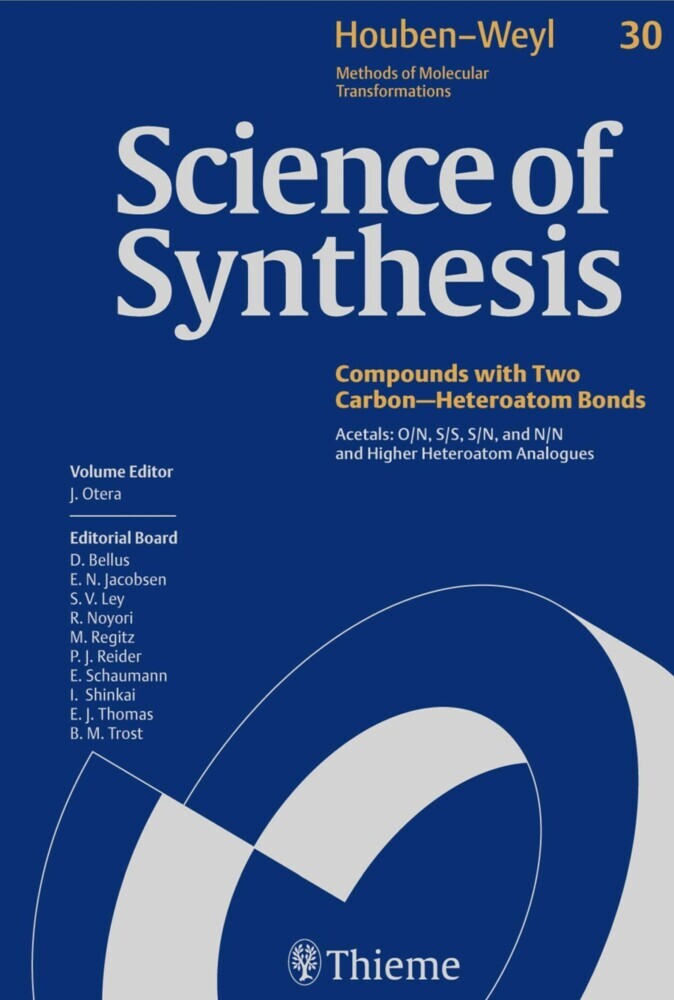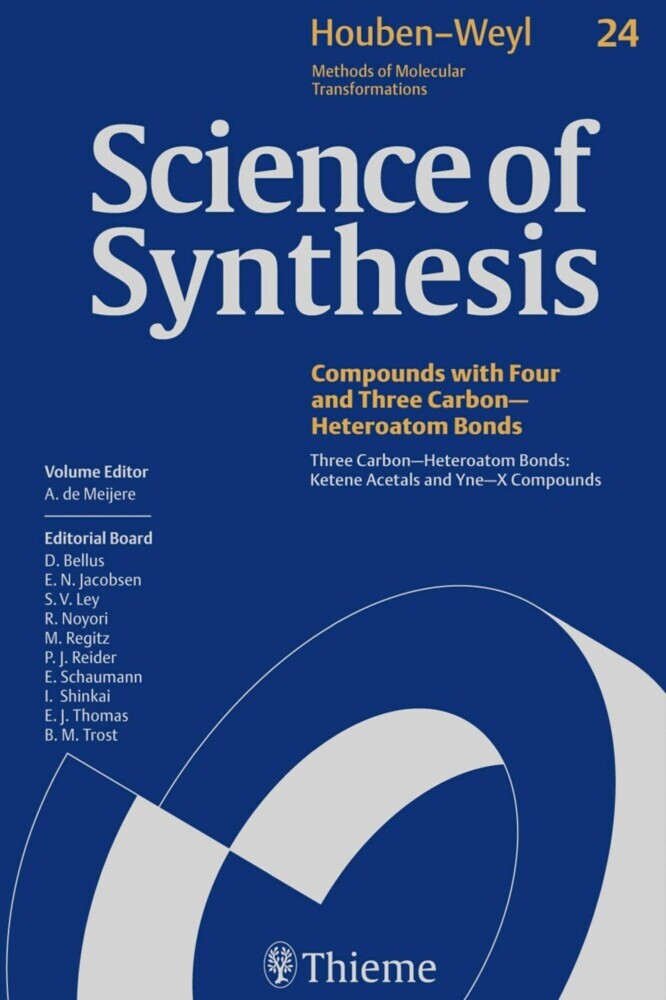Science of Synthesis: Houben-Weyl Methods of Molecular Transformations Vol. 29
Acetals: Hal/X and O/O, S, Se, Te
Science of Synthesis: Houben-Weyl Methods of Molecular Transformations Vol. 29
Acetals: Hal/X and O/O, S, Se, Te
Science of Synthesis: Houben-Weyl Methods of Molecular Transformations is the entirely new edition of the acclaimed reference series Houben-Weyl, the standard synthetic chemistry resource since 1909. This new edition is published in English and will comprise 48 volumes published between the years 2000 and 2008.
Science of Synthesis is a quality reference work developed by a highly esteemed editorial board to provide a comprehensive and critical selection of reliable organic and organometallic synthetic methods. This unique resource is designed to be the first point of reference when searching for a synthesis strategy.
- Contains the expertise of presently 400 leading chemists worldwide
- Critically evaluates the preparative applicability and significance of the synthetic methods
- Discusses relevant background information and provides detailed experimental procedures
For full information on the Science of Synthesis series, visit the Science of Synthesis Homepage
1;Science of Synthesis - Volume 29: Acetals: Hal/X and O/O, S, Se, Te;11.1;Title page;31.2;Imprint;51.3;Preface;61.4;Volume Editor's Preface;81.5;Overview;101.6;Table of Contents;121.7;Introduction;421.8;29.1 Product Class 1: F/Hal Acetals;541.8.1;29.1.1 Product Subclass 1: F/F Acetals;541.8.1.1;29.1.1.1 Synthesis of Product Subclass 1;541.8.1.1.1;29.1.1.1.1 Method 1: Fluorination of Alkanes;541.8.1.1.1.1;29.1.1.1.1.1 Variation 1: Fluorination a to a Carbonyl Group;541.8.1.1.1.2;29.1.1.1.1.2 Variation 2: Fluorination at the a-Carbon of Imines and Nitriles and at the ß-Carbon of Enamines;571.8.1.1.1.3;29.1.1.1.1.3 Variation 3: Fluorination a to a Phosphonyl or Sulfonyl Group;581.8.1.1.2;29.1.1.1.2 Method 2: Fluorodecarboxylation of Carboxylic Acids;591.8.1.1.3;29.1.1.1.3 Method 3: Synthesis from Haloalkanes;591.8.1.1.4;29.1.1.1.4 Method 4: Deoxofluorination of Carbonyl Compounds and Their Derivatives;601.8.1.1.4.1;29.1.1.1.4.1 Variation 1: Deoxofluorination of Aldehydes and Ketones;601.8.1.1.4.2;29.1.1.1.4.2 Variation 2: From 1,1-Bis(trifluoromethylsulfonyloxy) Compounds;631.8.1.1.5;29.1.1.1.5 Method 5: Fluorodesulfurization of Thioketones, Dithioacetals, or Dithioketals;641.8.1.1.5.1;29.1.1.1.5.1 Variation 1: By Fluorodesulfurization of Thioketones;641.8.1.1.5.2;29.1.1.1.5.2 Variation 2: By Fluorodesulfurization of Dithioacetals or Dithioketals;651.8.1.1.6;29.1.1.1.6 Method 6: Fluorination of C==N Compounds;661.8.1.1.6.1;29.1.1.1.6.1 Variation 1: By Fluorination of Diazo Compounds;661.8.1.1.6.2;29.1.1.1.6.2 Variation 2: Fluorination of Hydrazones, Azines, Oximes, or Oxime Ethers;671.8.1.1.6.3;29.1.1.1.6.3 Variation 3: Fluorination of 2H-Azirines;701.8.1.1.7;29.1.1.1.7 Method 7: Synthesis from Alkenes;711.8.1.1.7.1;29.1.1.1.7.1 Variation 1: From 1,1-Difluoroalkenes;711.8.1.1.7.2;29.1.1.1.7.2 Variation 2: Synthesis of Difluorocyclopropanes;711.8.1.1.7.3;29.1.1.1.7.3 Variation 3: By Fluorination of Alkenes and Fluoroalkenes;751.8.1.1.7.4;29.1.1.1.7.4 Variation 4: By Fluorination of Alkenylboron Derivatives and Alkenylsilanes;771.8.1.1.8;29.1.1.1.8 Method 8: Synthesis from Alkynes;781.8.1.2;29.1.1.2 Applications of Product Subclass 1 in Organic Synthesis;791.8.2;29.1.2 Product Subclass 2: F/Cl Acetals;801.8.2.1;29.1.2.1 Synthesis of Product Subclass 2;801.8.2.1.1;29.1.2.1.1 Method 1: Halogenation of Alkanes;801.8.2.1.2;29.1.2.1.2 Method 2: Synthesis from gem-Dihaloalkanes;821.8.2.1.3;29.1.2.1.3 Method 3: Synthesis from C--O Compounds;821.8.2.1.3.1;29.1.2.1.3.1 Variation 1: Synthesis from 1,1-Bis(trifluoromethylsulfonyloxy) Compounds;821.8.2.1.3.2;29.1.2.1.3.2 Variation 2: Synthesis from a-Chlorooxiranes;831.8.2.1.4;29.1.2.1.4 Method 4: Synthesis from C==N Compounds;831.8.2.1.5;29.1.2.1.5 Method 5: Synthesis from Alkenes;841.8.2.1.5.1;29.1.2.1.5.1 Variation 1: Synthesis of 1-Chloro-1-fluorocyclopropanes;841.8.2.1.5.2;29.1.2.1.5.2 Variation 2: Synthesis from Haloalkenes;851.8.2.2;29.1.2.2 Applications of Product Subclass 2 in Organic Synthesis;861.8.3;29.1.3 Product Subclass 3: F/Br Acetals;871.8.3.1;29.1.3.1 Synthesis of Product Subclass 3;871.8.3.1.1;29.1.3.1.1 Method 1: Synthesis from Alkanes;871.8.3.1.2;29.1.3.1.2 Method 2: Bromodecarboxylation of a-Fluorocarboxylic Acid Derivatives;891.8.3.1.3;29.1.3.1.3 Method 3: Synthesis from Haloalkanes by Halogen Exchange;891.8.3.1.4;29.1.3.1.4 Method 4: Halogenation of C--O Compounds;901.8.3.1.5;29.1.3.1.5 Method 5: Halogenation of C==N Compounds;901.8.3.1.6;29.1.3.1.6 Method 6: Synthesis from Alkenes;911.8.3.1.6.1;29.1.3.1.6.1 Variation 1: Synthesis of 1-Bromo-1-fluorocyclopropanes;911.8.3.1.6.2;29.1.3.1.6.2 Variation 2: Synthesis from Haloalkenes;921.8.3.1.7;29.1.3.1.7 Method 7: Fragmentation and Bromination of a 2-Deoxy-2-fluoro Carbohydrate Derivative;931.8.3.2;29.1.3.2 Applications of Product Subclass 3 in Organic Synthesis;931.8.4;29.1.4 Product Subclass 4: F/I Acetals;941.8
| ISBN | 9783131720412 |
|---|---|
| Artikelnummer | 9783131720412 |
| Medientyp | E-Book - PDF |
| Copyrightjahr | 2014 |
| Verlag | Georg Thieme Verlag KG |
| Umfang | 1327 Seiten |
| Sprache | Englisch |
| Kopierschutz | Digitales Wasserzeichen |

